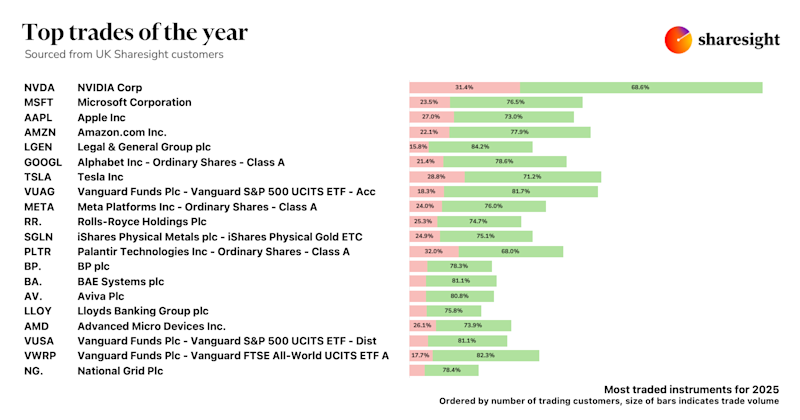How to handle the Trustpower demerger
In December 2015, Trustpower announced it would undergo a process to demerge its wind assets in Australia and New Zealand, to produce two independent companies, New Trustpower and Tilt Renewables. Among the key reasons for the demerger were to enable each business to focus on their respective areas of specialisation, where Tilt Renewables can expand on Trustpower’s Australian wind development and generation business - also to take advantage of opportunities created by Australia’s Renewable Energy Target (RET) requirements - and New Trustpower can continue to expand on it’s current hydro electricity initiatives and multi-product retail strategy in New Zealand.

After shareholders voted in favour of the demerger, Trustpower began the process of implementing the scheme, which would see the existing listing, Trustpower, liquidated to form the two new companies. Existing Trustpower shareholders would then receive one share in each of the new companies, for each one Trustpower share they held at the ‘Record Date’, the 28th of October.
Sharesight makes it easy for shareholders, particularly from New Zealand or Australia, to account for this demerger within their Sharesight portfolio.
Tax Residents of New Zealand
For Trustpower shareholders who are tax residents of New Zealand, Trustpower received a binding agreement from the Inland Revenue Department (IRD) on a number of key points, which included the following:
- The distribution of shares in ‘Tilt Renewables’ and ‘New Trustpower’ would not be considered a ‘dividend’, therefore no imputation credits or withholding taxes apply.
- Trustpower shareholders may be subject to NZ income tax on gains made (or allowed a deduction for loss sustained) in certain circumstances, e.g. Trustpower Shareholder is in the business of dealing in shares, disposes of the Trustpower Shares as part of a profit-making undertaking or scheme, or acquired the Trustpower Shares with the purpose of selling them.
To account for the above, in this step-by-step, we have followed instruction per the scheme booklet which advises that the ‘amount received for disposal’ for your original TPW shares, will be equal to the market value of the shares received in each of the new companies, as at the ‘Distribution Date’ (November 1, 2016). These market values will form the basis for your new holdings in Tilt Renewables (TLT) and New Trustpower (TPW). For this example, we are using the closing market price of each respective company, as at November 1.
Firstly, from the ‘Overview’ page, or via the ‘Holdings’ tab, click the ‘Add or Import Holdings’ button. On the next page, search for either ‘Tilt Renewables’ or ‘Trustpower’, or search by code - TLT or TPW.
NOTE -- You will see two options for TPW, one of which will be greyed out. This represents the old TPW listing, so be sure to select the option that is not greyed out.
Once you’ve selected the correct stock form the search results, you will need to complete the transaction details. Select 01/11/2016 (1st November, 2016) as the date and for the ‘Quantity’, enter the same number of units as your original Trustpower holding. Per our explanation above, the ‘Price’ we will use is the closing price for the same date. Click ‘Save Holding’ once finished, to save this transaction.

Once you’ve saved this, repeat the steps above for the other company, i.e. Tilt Renewables (TLT).

After you have entered your second new company and saved, you will be taken to the ‘Overview’ page. From here, click into your original Trustpower holding. Remember, your original holding should now be greyed out, to indicate that it is no longer trading. Once you’ve arrived at the ‘Holdings’ page for your original Trustpower holding, click ‘Enter a New Trade or Adjustment’:

From the ‘Type’ drop-down, select ‘Sell’, to reflect the ‘disposal’ of these shares. The ‘Date’ will be the ‘Distribution Date’, 01/11/2016. The ‘Quantity’ will be the total quantity remaining. The ‘Price’ will be the sum of the market values of your holdings in Tilt Renewables and New Trustpower (as calculated in the last two steps), divided by your original TPW quantity. For example:
Market Value of Tilt (TLT)
$22,000
Market Value of New Trustpower (TPW)
$49,100
Original Trustpower Quantity
10,000
‘Sell’ price for original Trustpower
(22,000 + 49,100) divided by 10,000 = $7.11
Here, we’ve also chosen to leave a comment, referencing the demerger as the reason for this ‘Sell’ transaction. Once complete, click ‘Save Changes’.
NOTE -- If you are classified as a ‘Trader’ for tax purposes, you can refer to the Traders Tax Report within Sharesight, to view any gain or loss on the disposal of your Trustpower shares.
Tax Residents of Australia
For tax residents of Australia, Trustpower has advised that rollover relief, if elected for, will apply to this demerger. With that said, there will be a few differences in the steps you need to follow.
If you have elected for rollover relief, you will need to enter a ‘Sell’ transaction against your original Trustpower shares at a price that matches the existing cost-base, so as not to incur any Capital Gain on this disposal. The date for this will be 01/11/2016 (1st November, 2016). The ‘Quantity’ will be the current position in Trustpower and the ‘Price’ should be your original purchase price. If your Trustpower holding was purchased in more than one parcel, you can check your cost base by referring to the ‘Holding Information’ tab, on your Trustpower holding page.

Once you’ve saved this transaction, refer to the ‘Capital Gain’ figure in the same page, to confirm that the ‘Sell’ transaction has resulted in a $0 Capital Gain.
When it comes to adding the new Trustpower and Tilt Renewables holdings, we have chosen to use the apportioned cost base(s) to create the new positions, as these figures will form the basis for determining any capital gain/loss if you decide to sell your new shares. Per the Scheme booklet, the ‘Tax Cost Base’ of the Tilt Renewables and New Trustpower shares ‘will be determined by allocating the shareholder’s existing tax cost base in Trustpower across the shares, based on the respective market values of Tilt Renewables and New Trustpower.’
The best place to start would be the Historical Cost Report, under the ‘Reports’ tab. Using this report, set the ‘End’ date to the 31/10/2016 (31st October, 2016). The ‘Start’ date can be as far back as required. Once you’ve applied this to the report, take a note of the ‘Closing Balance’ figure. Remember that this will be in $AUD, which will be required when entering your new holdings.

The Market Price of Tilt Renewables and New Trustpower shares, as at 01/11/2016, were NZ$2.20 and NZ$4.91 respectively. This will represent 30.94% and 69.06% of the original Trustpower cost base, respectively. Using the ‘Closing Balance’ figure from the Historical Cost report, apply both percentages to work out the starting ‘Tax Cost Base’ for each of the new holdings, e.g. $72,632.77 x 0.3094 = $22,472.58, $72632.77 x 0.6906 = $50,160.19.
From here, you have all the information you need to begin adding your new holdings. From either the ‘Holdings’ tab, or ‘Overview’ page, click the ‘Add or Import Holdings’ button. On this new page, type in either of the new code (TLT or TPW - be sure to select the TPW that is not greyed out). We advise to use an ‘Opening Balance’ transaction, with a date 01/11/2016 (1st November, 2016). The ‘Cost Base’ will be the ‘Tax Cost Base’ calculated in the paragraph above, and the ‘Quantity’ will be the number of units held in the new company.

As you can see above, we’ve also nominated the given ‘Market Price’, to ensure performance is calculated correctly going forward. Once you’ve finished, click ‘Save this Holding’ and repeat for the next holding.
NOTE -- In our example, we use the 1st of November as the opening date for each of the new holdings. While this is correct for performance reporting, it will not factor in any applicable CGT discounts if you sell shares within 12 months, given that rollover relief is applicable. With that said, we advise to make a personal note as reminder to factor in the discount on any gain figures, if you decide to sell within 12 months.
FURTHER READING
- Community Forum -- Corporate Action: How to handle the Trustpower demerger
- Help -- Corporate Actions
- Blog -- Corporate actions and your investment performance

Sharesight users' top trades – December 2025
Welcome to the December 2025 edition of Sharesight’s monthly trading snapshot, where we look at the top buy and sell trades by Sharesight users over the month.

Top trades by UK Sharesight users in 2025
Welcome to the 2025 edition of our UK trading snapshot, where dive into this year’s top trades by the Sharesight userbase.

Top trades by global Sharesight users in 2025
Welcome to the 2025 edition of our global trading snapshot, where we dive into this year’s top trades by Sharesight users around the world.